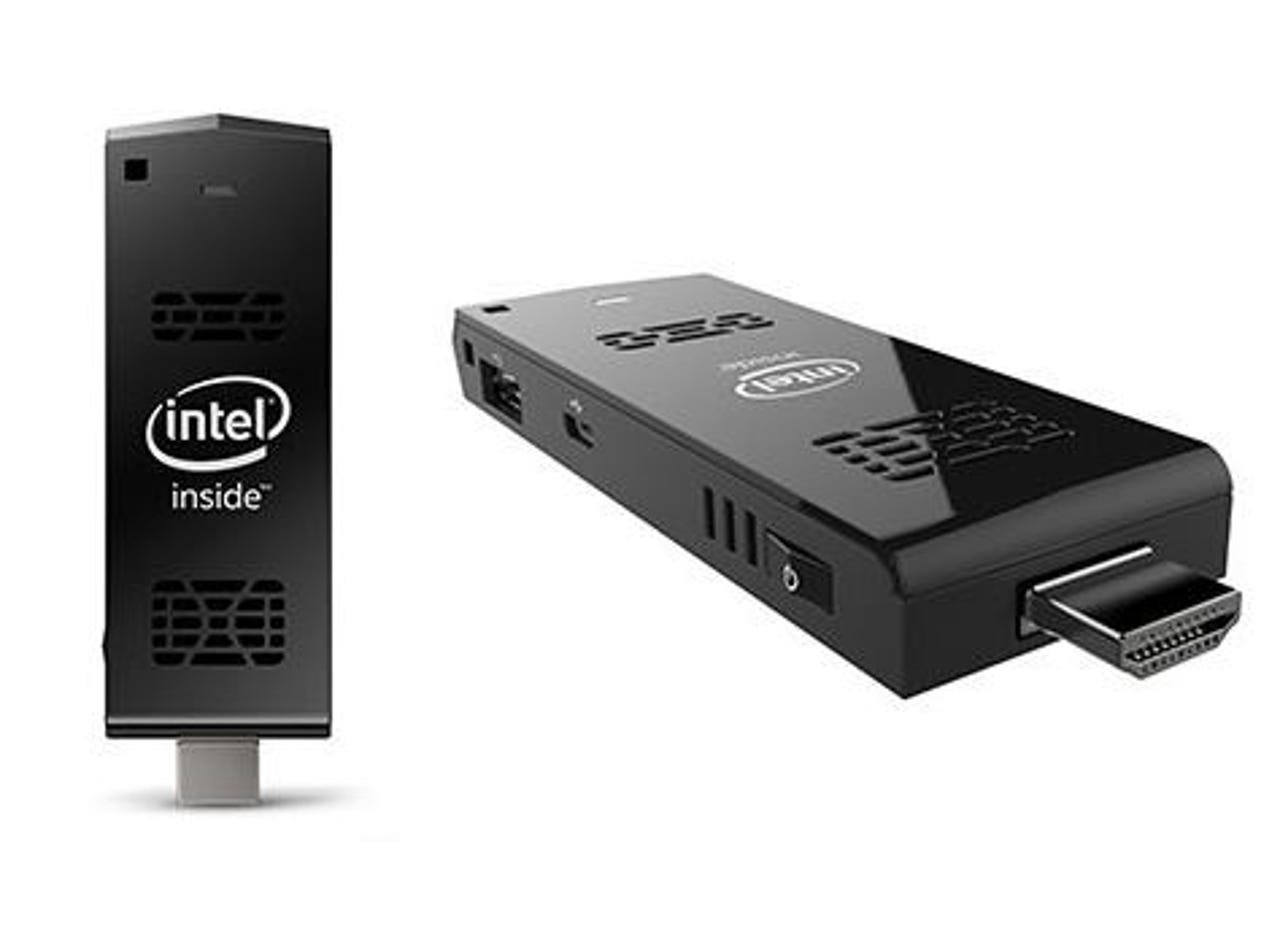Intel Compute Stick now available: $149 for Windows version, $110 for Linux


The concept of a "PC stick" -- a processor and RAM embedded into a gum-pack-sized device that can connect to your HDTV via an HDMI connection -- is nothing new, but when a company like Intel embraces the concept, a lot more people start paying attention.
That was the case at CES back in January, when Intel showed off the Compute Stick, its version of a teeny-tiny PC that includes a quad-core Atom processor and -- depending on whether you want the Windows 8.1 or Linux edition -- comes with up to 2GB of RAM and up to 32GB of onboard storage. All of this fits onto something with dimensions of just 4.1x1.5x0.5 inches.
Fast-forward to April and the chip giant is announcing that the Compute Stick is now ready to order -- and has started sending sample units out to tech reviewers to put through their paces. Newegg, for example, shows the Windows version available to pre-order for $149.99 with a shipping date of May 8, while the Linux model runs $109.99 and will be released on May 31. You'll also see rebranded editions of the Compute Stick floating around from other manufacturers.
So should you be giving up one of your TV's precious HDMI ports for the Compute Stick? Reviewers certainly wanted to like the idea of a pocket-friendly PC, though there were some caveats across the board. First, while you'll ideally use it with wireless input devices as you sit on your sofa, you need to have a wired keyboard and mouse for initial setup of the Compute Stick (made more complicated by the device's single USB port). Graphics performance was seen as pokey -- though not necessarily a surprise given the form factor, the device's inadequacies for casual gaming (even in streaming games from another PC) really vexed Gizmodo.
On the other hand, PCWorld praised the Compute Stick's ability to handle basic Web browsing and Microsoft Office use adequately, and HotHardware ran a number of streaming tests that showed that it copes with HD video decently as well. PC Magazine points out that the Compute Stick ships with the 32-bit version of Windows 8.1, so don't expect to use any 64-bit programs with it.
The consensus seems to be that if you keep your expectations realistic about what the Compute Stick can do, you may find it a bargain to have a Windows PC that can fit in your pocket for a mere $150. In fact, it could find a life outside the living room (as could its Google Chromebit competitor) as a business solution for companies with displays and input devices already in hand. Are you going to buy the Compute Stick? Let us know why or why not in the discussion section below.
See also: